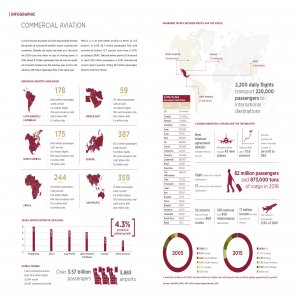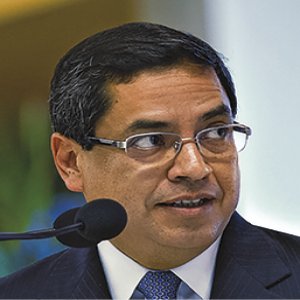Internal Politics Abroad Could Open Door to Competitors

STORY INLINE POST
Q: What are the most influential trends affecting the aerospace sector?
A: Commercial aviation is being led by Boeing and Airbus, for commercial aircraft, and Bombardier and Embraer, for regional jets. These companies and their suppliers constantly work to optimize their manufacturing practices to reduce costs as the market demands, which often leads them to outsource processes and services from their home countries. There are concerns that this trend will reverse due to internal policies in certain countries but any policy that prevents companies complying with market demands will impact manufacturers’ competitiveness, creating an opportunity for OEM competitors from other countries, including China and Russia, to enter the North American market. Regardless of the policies, in the longterm the market will always correct itself.
There are two situations to consider. The first is the global market, which is growing especially for the commercial aviation segment. Globally, passengers prefer flying over other methods of transportation. This trend will continue unimpeded unless there is another global crisis. To address the needs for this large number of passengers, airlines must grow and update their fleets. Aircraft are part of a complex supply chain that incorporates companies all over the world and the market is pressuring manufacturers to reduce costs. This may lead them to best-cost countries where they can outsource quality processes and services.
The second aspect of the economy which could impact the aerospace industry is seen in specific trade scenarios, but uncertainty at this point means it is not possible to determine how the wind will blow. We are assessing different scenarios and constant analysis should help us to react and prepare for evaluated events.
Q: How could Mexico benefit if it successfully adapts to changing policies abroad?
A: The global market for aerospace products is strong, thus many international companies have a positive outlook. Mexico has one of the most open economies in the world, counting trade agreements with 46 countries. A climate of uncertainty may cause an economic slowdown as companies become increasingly cautious to expand or invest. Many are waiting to see what happens before they commit to any changes in strategy.
Some are talking about an elimination of NAFTA but this is not a realistic scenario, while renegotiation is. The treaty is almost 20 years old, so some of its clauses need to be updated taking the three countries’ interests into account. Even if the treaty were eliminated, Mexico has many other trade partners. The reasons Mexico is attractive to the aerospace sector will not change. It is not possible to manufacture markets’ behavior as markets themselves act as equalizers. This period of uncertainty is a hiccup in an otherwise healthy sector.
Q: What actions is FEMIA taking to support the sector amid economic challenges?
A: We are now implementing a national supply chain development program and developing other strategies to support the sector, including certification and business development programs. We are in line to reach ProAéreo’s export and industry growth goals and are already developing the next edition of the program alongside the federal government. FEMIA will continue its course to supply chain development and human resources preparation. If we continue on this road and fulfill the lacking core competencies, I am certain the sector will be successful.
Q: How is FEMIA supporting the development of the aerospace supply chain?
A: Our supply chain development program is collecting a significant amount of technical data and information about core competencies of every company in the industry. This data will facilitate the identification of sector needs and what can be done to promote and support individual companies.
We are studying the market to determine how many companies have the AS 9100 certification and estimate those to hold it at 60 to 70 percent of Mexican aerospace companies. There are also many other companies that have sufficient personnel and core competencies but have not entered the aerospace sector as they lack the certifications or equipment to do so. This study is a long-term process to create awareness, of which the first phase will be finished by September 2017.
We also support companies that are not already certified and help them connect with potential buyers, including OEMs and Tier 1s who can sponsor and advise them. Moreover, FEMIA is developing a pre-assessment program for companies that want to enter the industry that consists of a comprehensive analysis of business practices, quality and technology. This helps them determine their standing and figure out what they are missing to enter the sector. Through the identification and inclusion of more companies in an industrial park but did not know that their services complemented each other. Companies trust FEMIA to make the connections, protect their privacy and look for their best interests.
Q: How can Mexican aerospace reach new markets and which areas should the industry turn to?
A: The Mexican aerospace industry is still young. While a few companies have existed for over 40 years, the sector only started to take shape about 13 years ago. To convince foreign companies to invest in Mexico we are reaching out through events and investment seminars all over the world. We have to look toward the European Union and Asia. Europe is a great ally. We estimate that approximately 25 percent of FDI for the aerospace sector comes from this region and the rest comes mainly from the US and Canada. Working with Asian companies is a possibility but it is necessary to take into account the fact that business practices vary widely between countries. Japan, one of Asia’s strongest players, can take up to six years to make investment decisions while European and US countries usually make them in two years. We could also look toward Latin America, especially to Brazil which we have identified as a potential partner with growth possibilities.
























